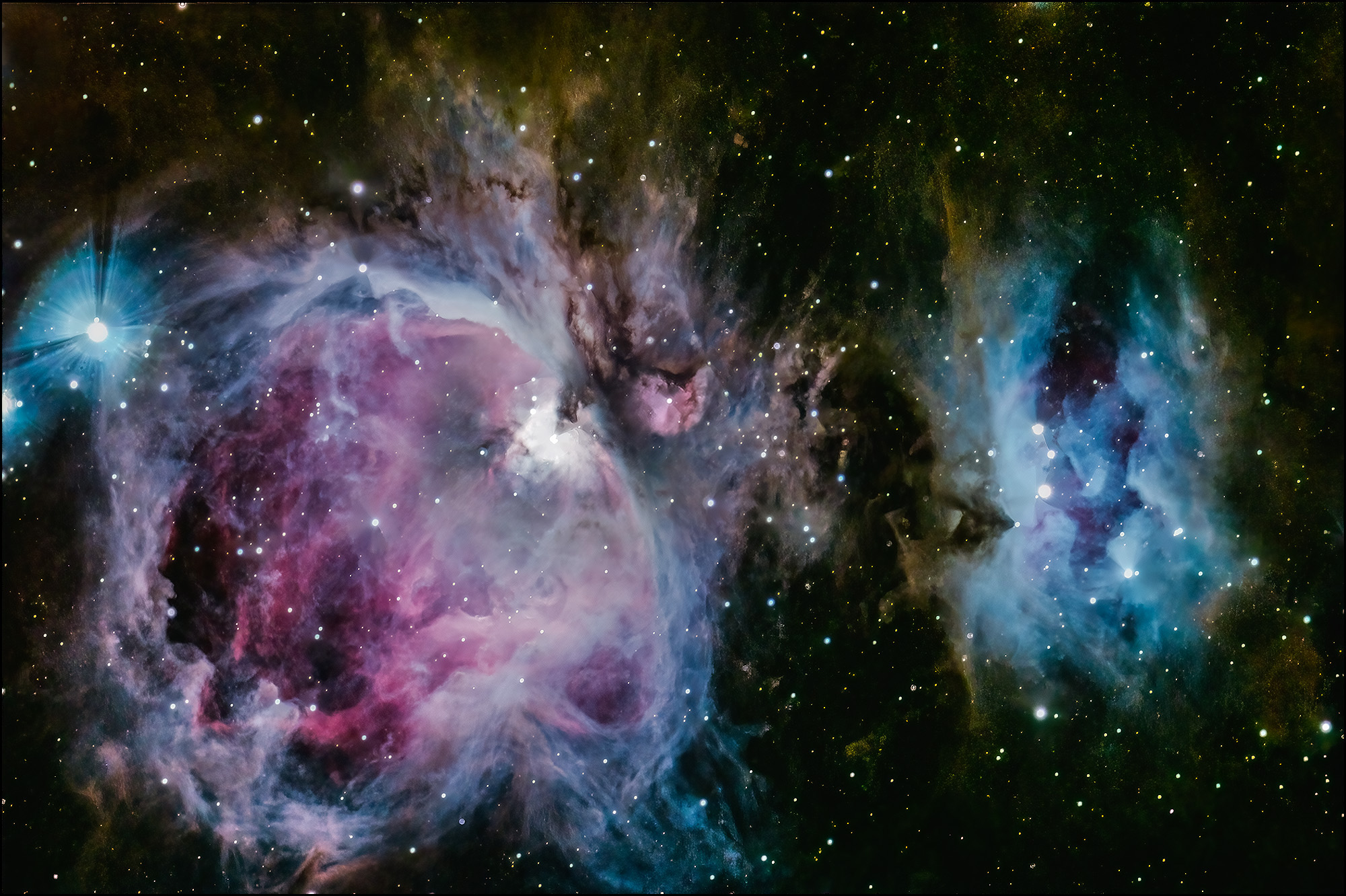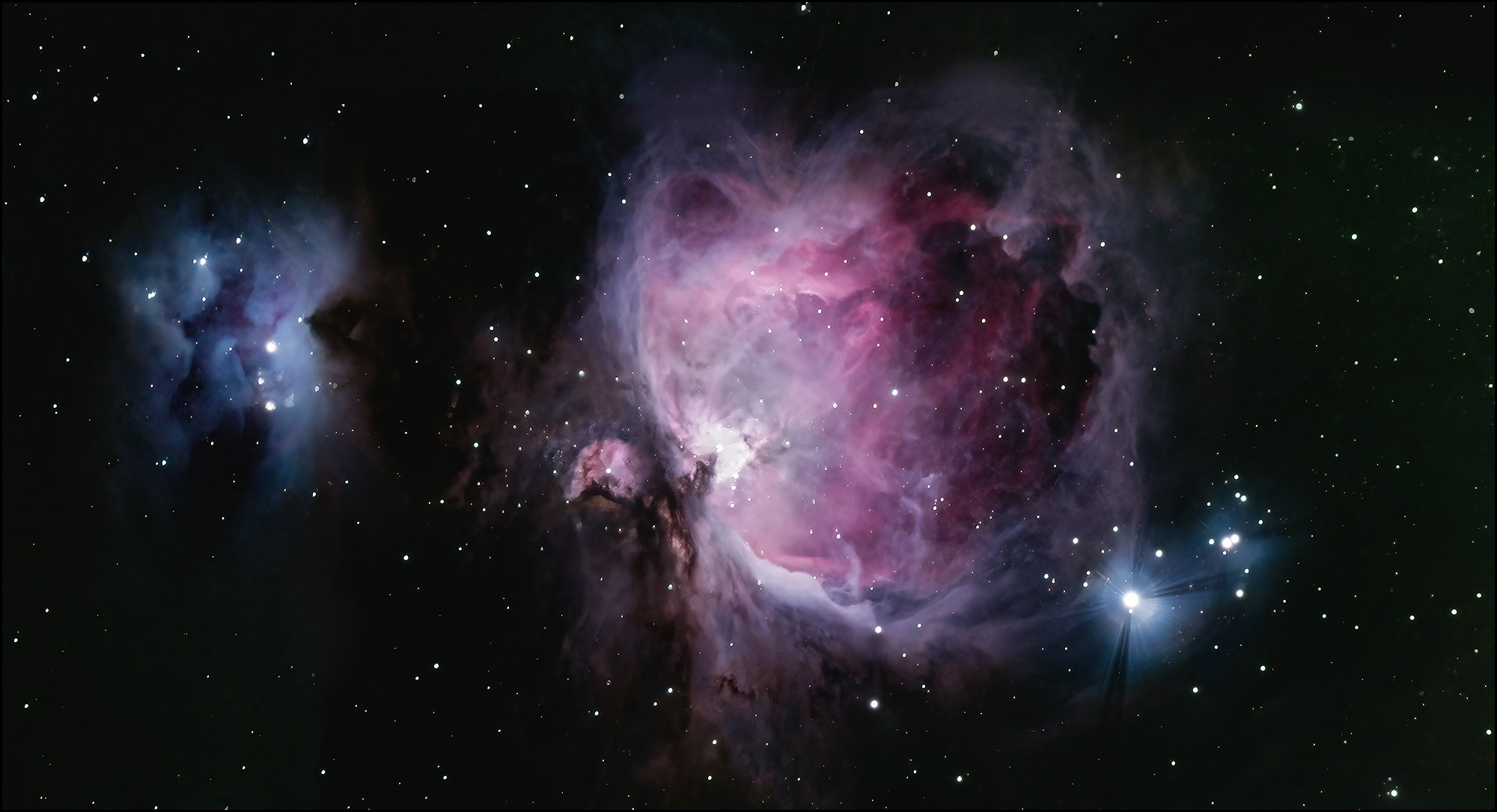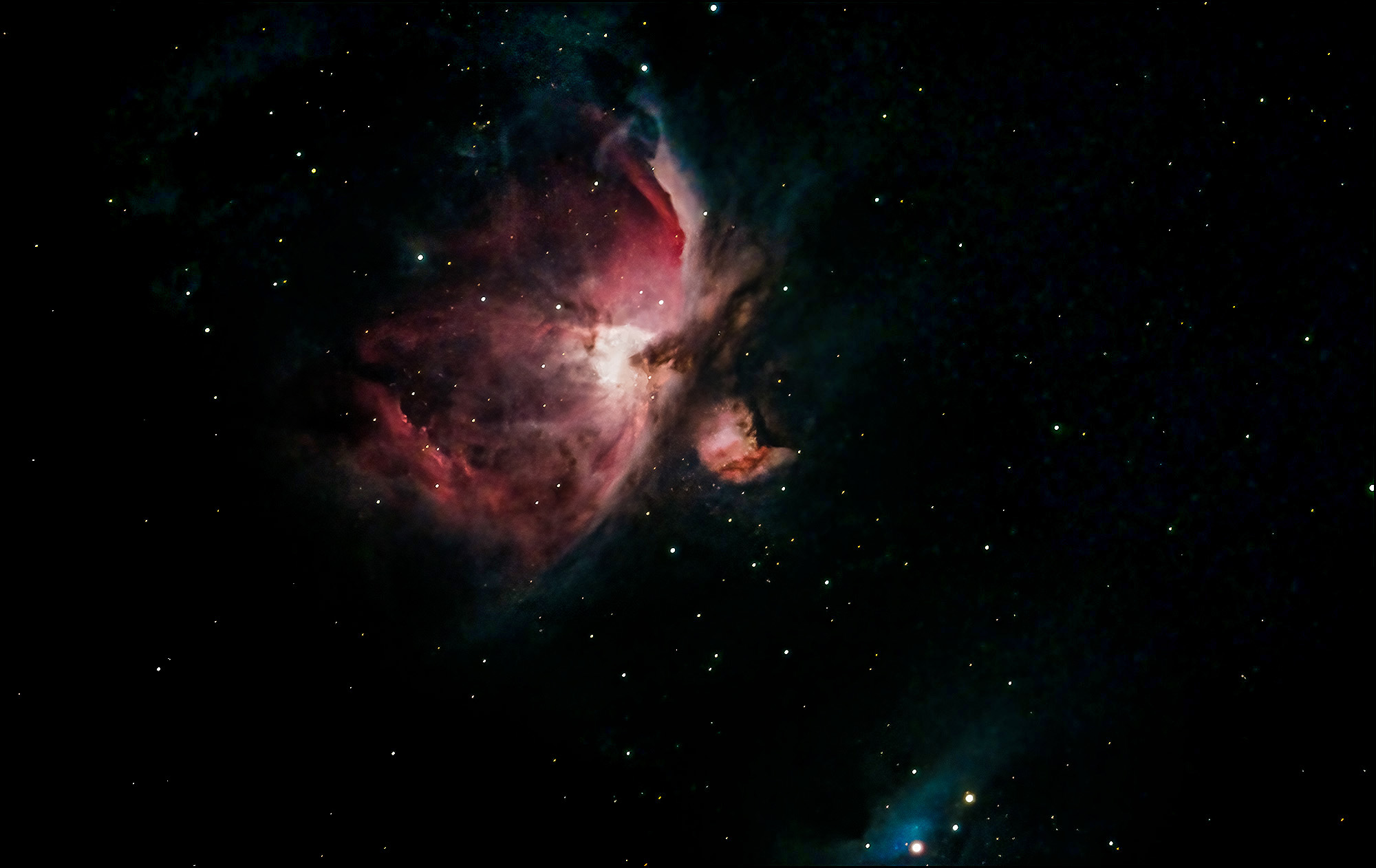Astronomy week continues!
I've developed something like a schedule for my astrophotography: Once a month, when the moon starts to cooperate, I head out to Palomar Mountain to do some test runs that give me an idea of which settings (mainly exposure time) work best on my chosen target. Then, a week later, I head out to the desert to (hopefully) make my final images. Then I wait three weeks for the moon to go back down before I go out again.
This month's project was not the C2022 comet, which I showed yesterday. That was just a bonus target that I had to do right away before it disappeared. My real target was M42, the Orion nebula, the biggest and most spectacular nebula in the sky. That makes it ideal for a beginner.
I have three images below. The bottom one was taken at Palomar Mountain on a night that featured both a bright moon and some equipment failures. As a result, I got only one usable frame from a stack of 60-second exposures. That's way too short an exposure time, and the single frame lacks detail. But it's surprisingly good anyway, and as a bonus it gives the best approximation of a Klingon bird of prey.
The middle image was taken from two stacks of images made at Palomar Mountain on a moonless night a week later. The main part of the image was created from a stack of 240-second exposures, while the bright center was made from a stack of 7-second exposures. At home I composited those together to get good detail across the whole image. Overall, it turned out well. I wouldn't have minded if it were my final image.
But there's more juice to be squeezed out of this onion. The top image is the best of all. It was made from a big stack of 300-second exposures (35 images total) while the bright center was made from an enormous stack of 5-second exposures (500 images total). The shorter exposure on the second stack keeps the center from being blown out, which erases all the detail. I composited that onto the main image and, finally, for the semicircular formation just to the right of center, I copied the version from my set of 7-second exposures the previous week. Altogether, then, it's a three-part composite.
The longer exposure along with the extremely dark sky provides better visibility of both the surrounding gases and the other nearby nebulas. The formation just a little to the right of the center is M43, De Mairan's Nebula, while the large blue formation farther to the right is NGC 1977, the Running Man nebula. (The black dust lanes in the center supposedly look a little bit like a running man. I'd say it looks more like Edvard Munch's "Scream.")
You'll notice that Orion only barely fits in the top image. I don't mind this. I deliberately bought a telescope with a long focal length even though I knew there would be three or four objects that only barely fit the frame. But for all the other objects in the universe, which are much smaller, that's not a problem and the longer focal length will give me much better magnification and detail.
(But in the middle picture everything fits fine! What's the deal? This is actually due to an equipment failure the night I took the picture. When I was all done I decided I should re-aim the scope and take another dozen shots. I ended up re-aiming inaccurately, but I knew my software could easily correct that. It did, but the result was sort of like a composite, with a good deal more horizontal room. It also has more vertical headroom, but that's only because it shows less of the nebula.)




So, you’re saying those *weren’t* taken by the Webb?
Beautiful images, Kevin. Thanks for posting them.
Start making more money weekly. This is valuable part time work for everyone. The best part ,work from the comfort of your house and get paid from $10k-$20k each week . Start today and have your first cash at the end of this week. Visit this article
for more details.. https://createmaxwealth.blogspot.com/
These are awe inspiring. Almost makes me believe in miracles.
Oh, bravo, Kevin. I hope you are dead chuffed about these. Nice work.
Wow! So is that Orion’s Belt and sword that show up brightly on the left side of the middle picture?
Awesome pics! A great way to combine science & photography.
Not to waste electrons repeating what has been already said, but HOLY CHICKEN! These are even better than the one you let me use in Losing My Religions! https://www.losingmyreligions.net/
You are getting so skilled at this photography, we are gonna have to double your salary.
Wow. Galileo and Kepler and Edmond Halley would have killed for this technology. So now in addition to the JWST we have the KDST!
Those are amazingly good pictures.
Magnification isn't particularly important for deep sky objects. As long as you're not doing planets, the main point of a telescope is not so much making things bigger as making them brighter. Think of it as enlarging the diameter of your eye.
What a long focal length will do is give you some assistance fighting light pollution as it minimizes the LP gradient across the field of view thereby making it easier to remove by processing.
The orientation of the middle image is a 180 degree rotation of the top image. Or the camera was right side up in one set, and upside down in the other.
😉
Nice picts!
Thank you! I was totally confused trying to compare the photos.